Unplugged and silent, Ada, my brand new PC, is sulking in a corner of the THC office as I type this. There’s nothing wrong with her, it’s just that earlier this week, realising that the rather wonderful Nuclear Option ran splendidly on her ancient predecessor, I decided to put off Official Changeover Day until the weekend.
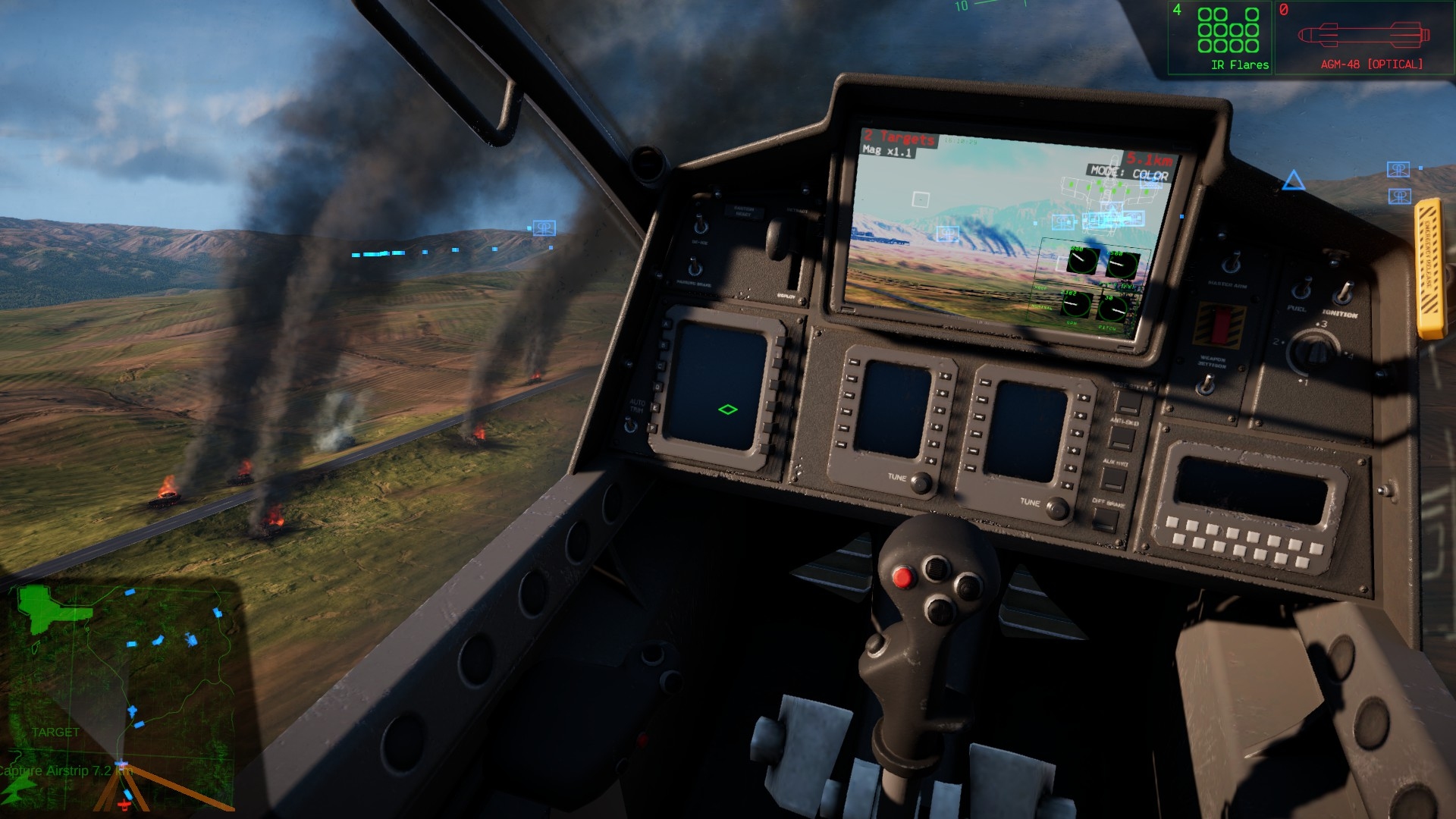
Fondly remember the days when combat flight sims didn’t try their darnedest to overheat little grey cells and little green PCBs… the era when friendly controls and restless frontlines were considered by some devs to be more important than faithful flight models and clickable cockpits? You and Shockfront Studios’ debut release are going to get on like an oil refinery on fire.
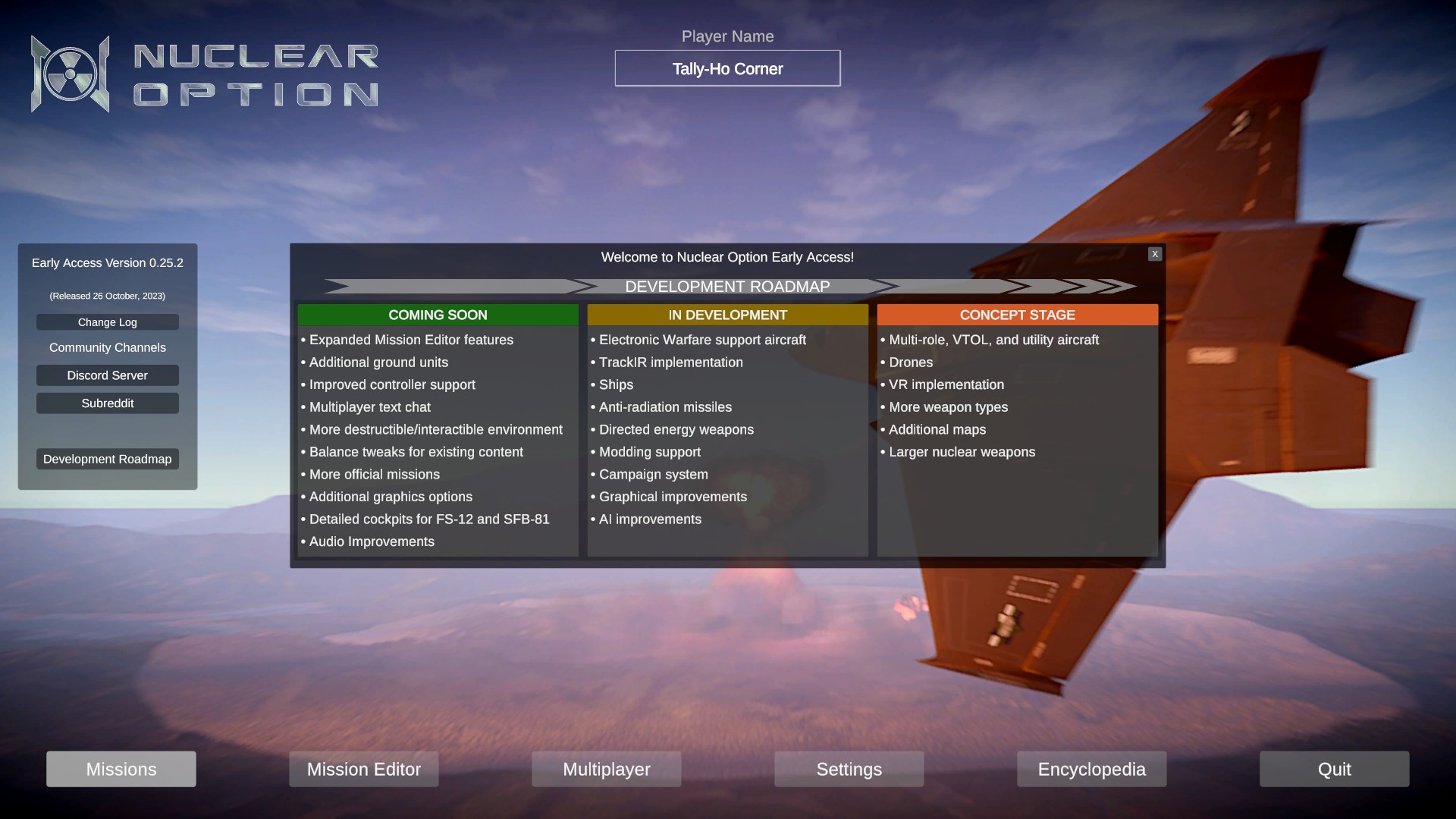
A £13 Early Access title with an exciting future ahead of it, Nuclear Option continues the simcade renaissance started by Tiny Combat Arena and Helicopter Gunship DEX. While I thoroughly enjoy both of those works-in-progress, if I had to pick just one of the trio I think I’d pick NO.
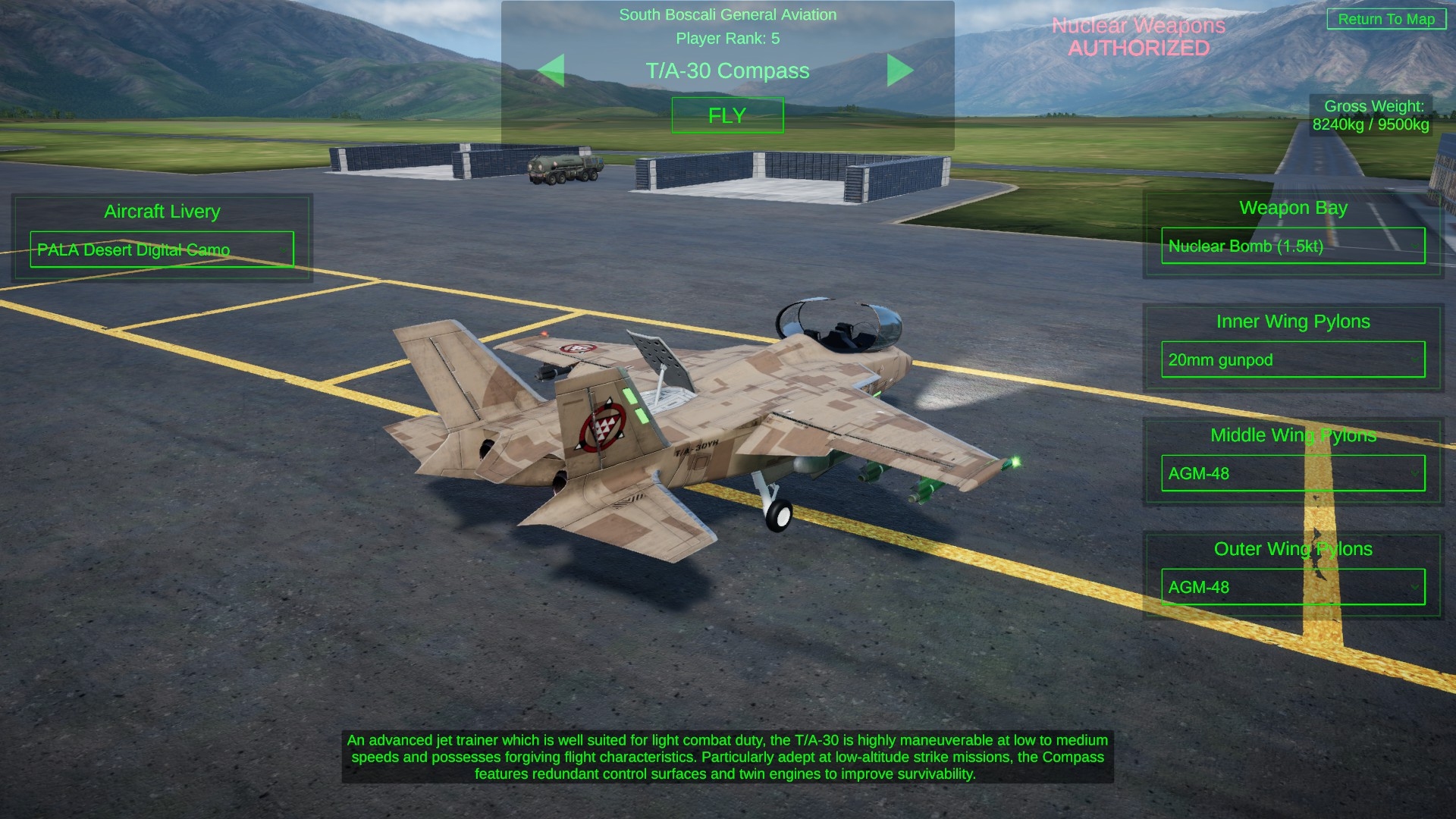
It only comes with seven solo missions right now*. Fortunately, one of those missions is ‘Escalation’, a spacious, unscripted air/land scuffle between two fictional states that, as the name implies, eventually matures into full-blown (tactical) nuclear war.
* And multiplayer and a mission editor.
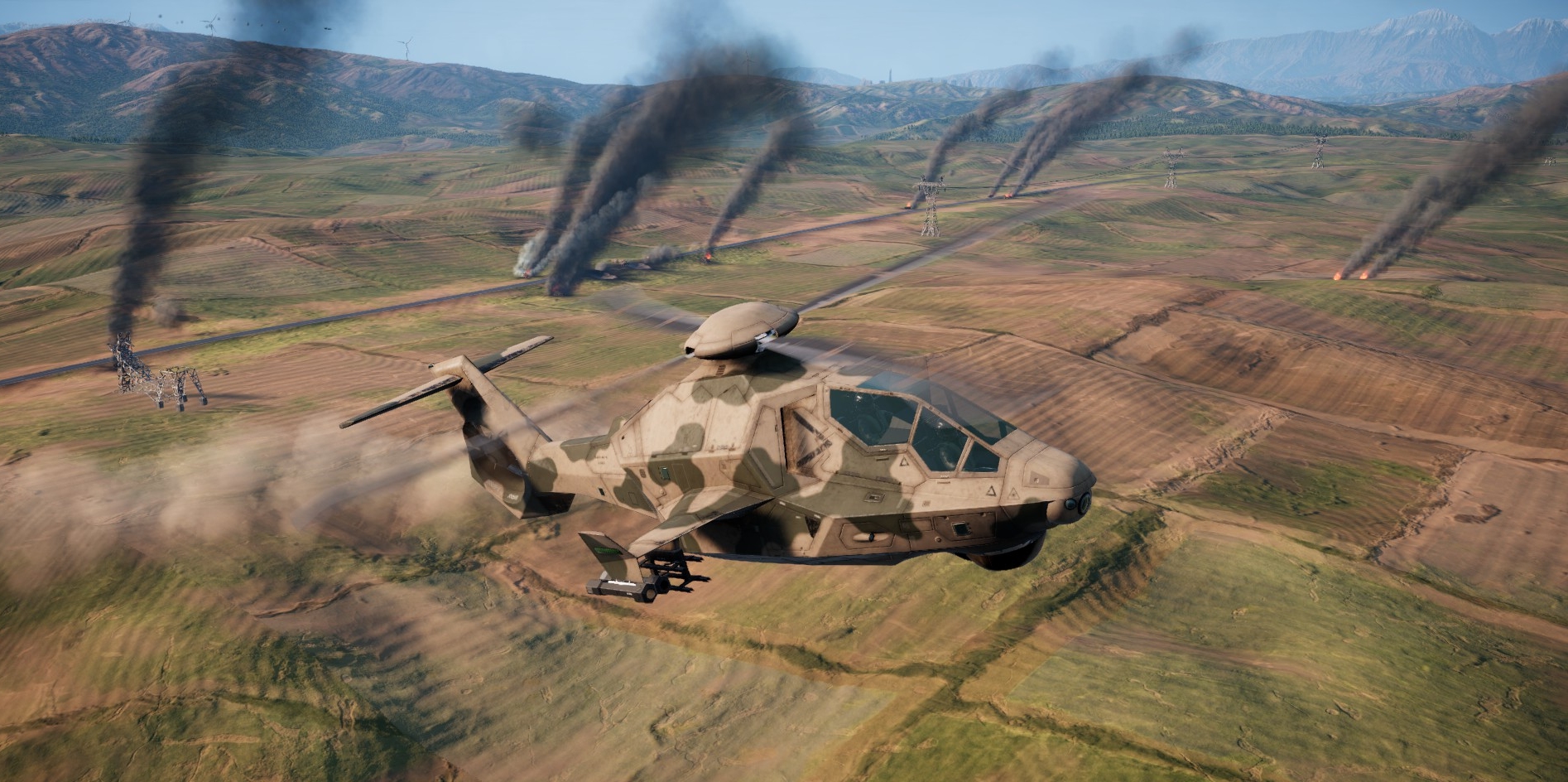
Three brief, undemanding, tutorials are all that stands between eager newcomers and this replay-friendly, heavily automated* martial maelstrom. Because NO’s aerodynes are NovaLogic simple, its load times are neglible, its key list short, and its default mouse-as-stick control system beautifully executed, before you know it you’re clobbering convoys, spoofing AAMs, spooking gophers, and purchasing farms.
* The player doesn’t get to task land units or wingmen.
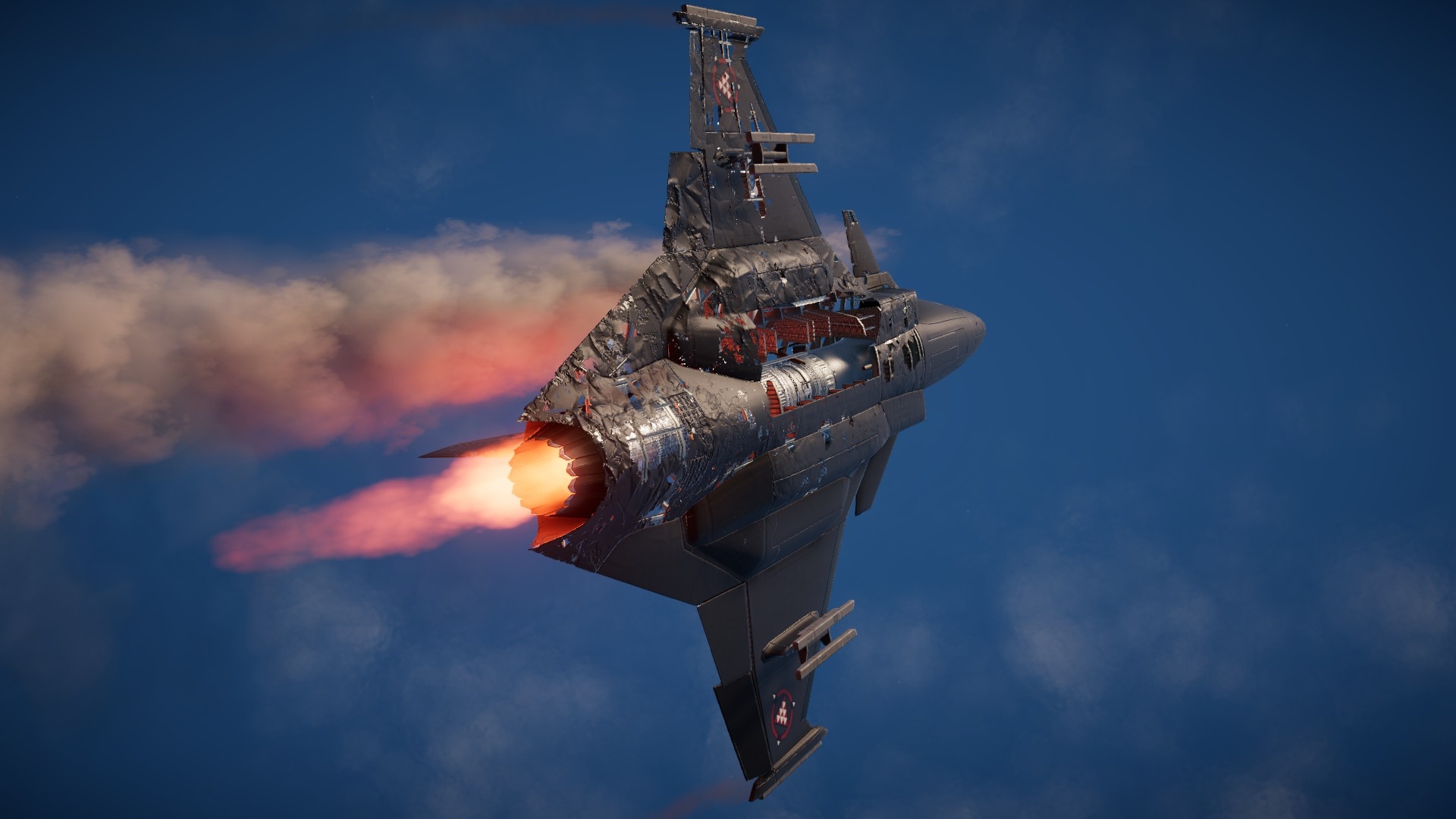
Although you won’t find references to them in any Janes volumes, the sim’s flyables and munitions are so close in appearance and behaviour to real contemporary aircraft and weapons, any early “Too sci-fi for me?” misgivings probably won’t last long.
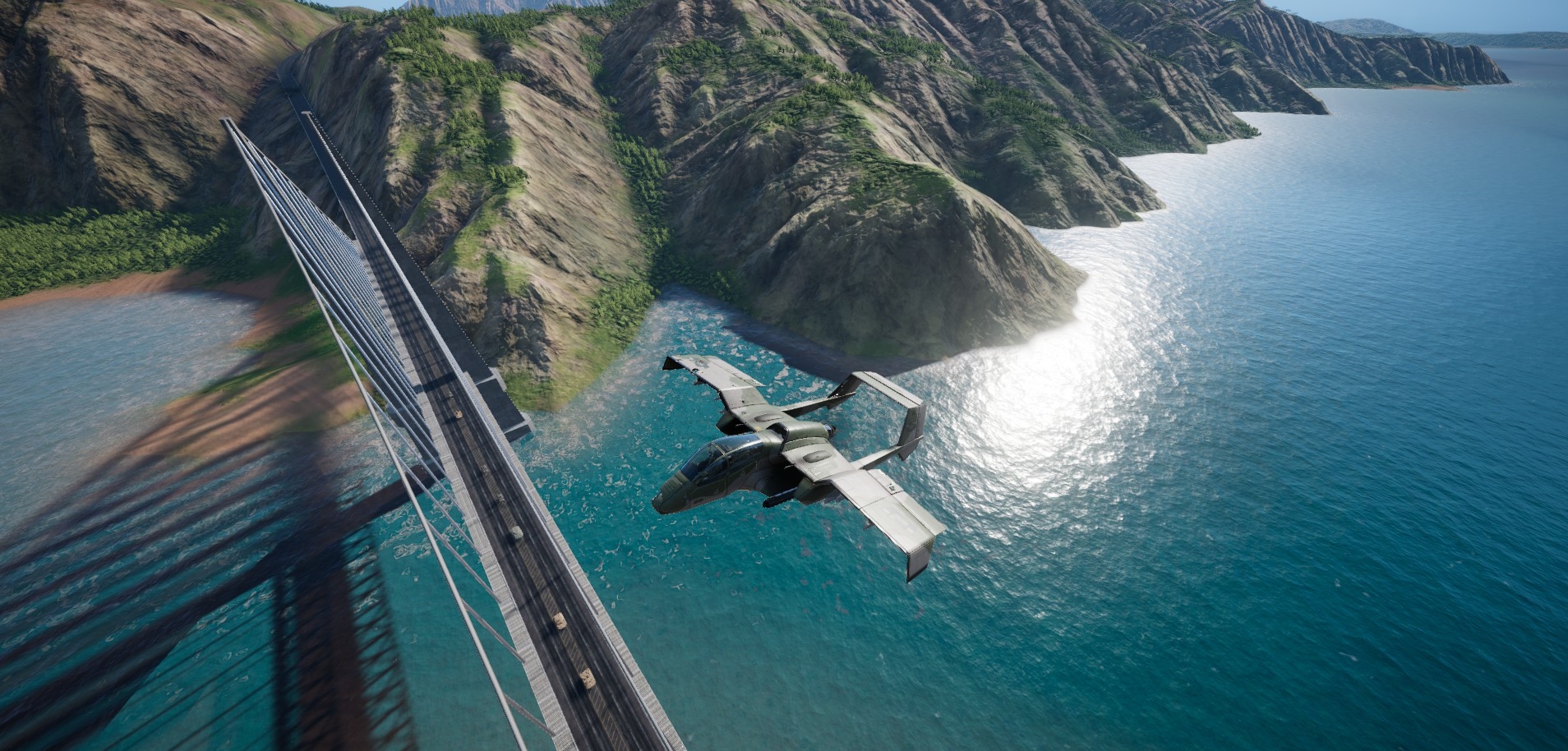
At the start of Escalation sessions you’re restricted to flying the Cricket, a slow but manoeuvrable insurgency interrupter that owes much to the venerable Bronco. Kills, be they winged, wheeled or walled, sequentially unlock other steeds such as the Chicane, a Comanche-reminiscent chopper, and the Revoker, a lightning-quick interceptor that looks like the lovechild of a JAS 39 Gripen and a J-20 Mighty Dragon.
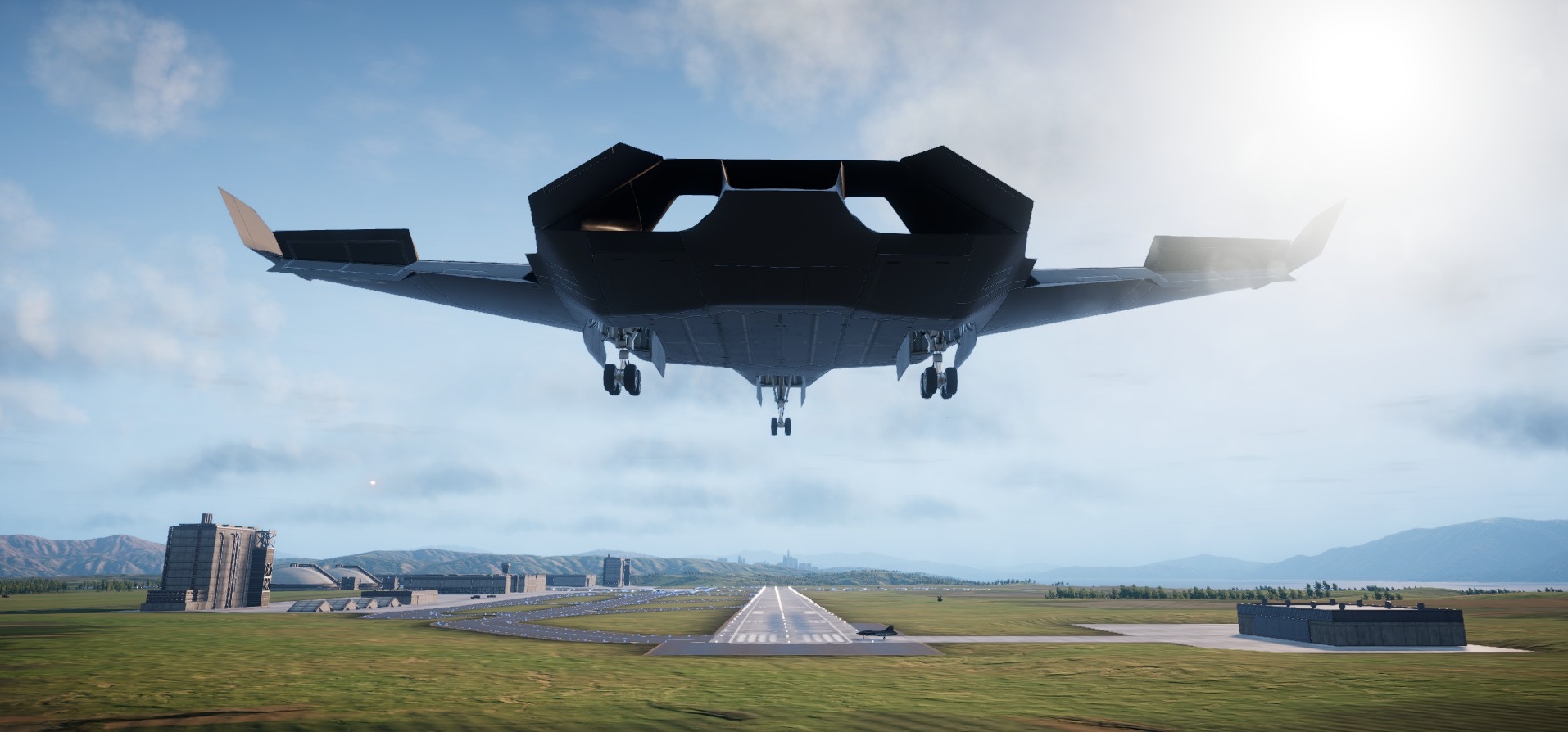
Accurately deliver enough knock-off Sidewinders, Sparrows, HARMs, Mavericks, and Paveways, and eventually you gain access to the sim’s B-2 Spirit equivalent, the masterfully monikered Darkreach.
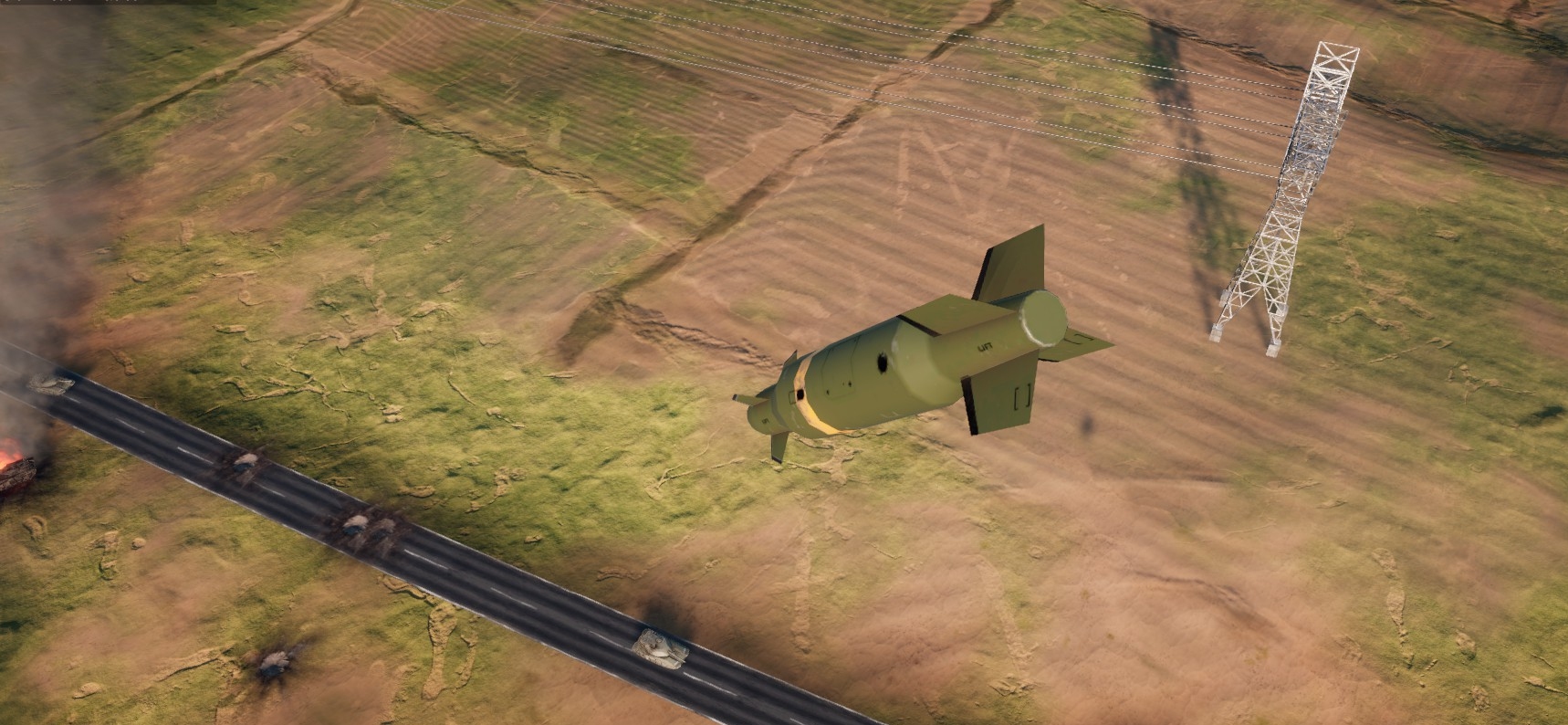
With activities like MFD manipulation and engine management unsimmed, and aiming and launching of fire-and-forget missiles achieved through an idiotproof two-step process, the NO pilot is free to focus on the constantly changing tactical situation around them. Which target should I terrorise next? Do I need to put a mountain between myself and that bandit? Now I’m out of flares how can I escape those incoming AAMs? Is it time I headed back to base to refuel and re-arm? Should I try to fly under those fast-approaching powerlines or hop over them?
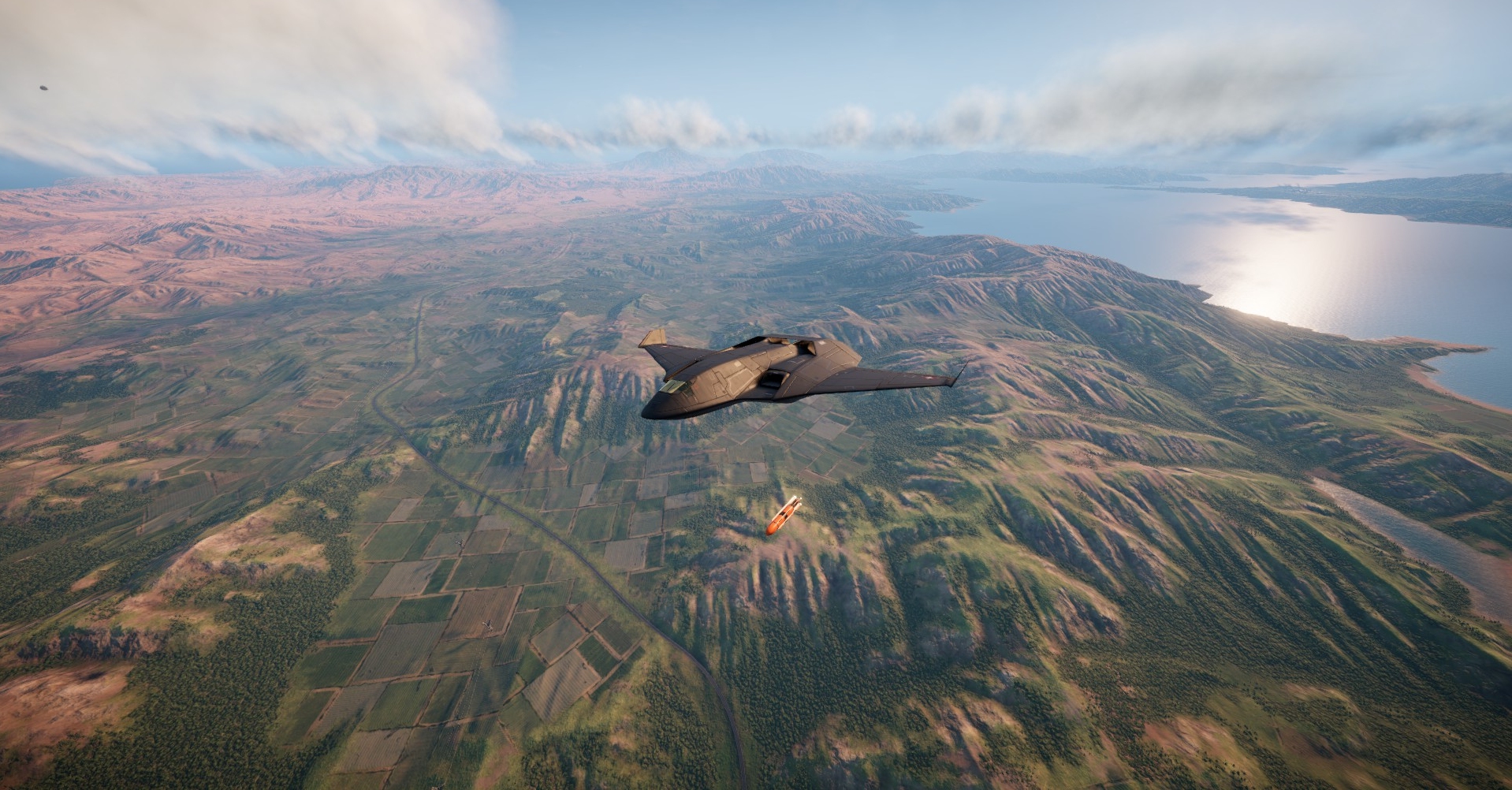
Actually, forget that last one. Powerline limbo isn’t necessary at the moment. Like the trees that festoon the fetching, contour-rich, abode-poor, radar-resilient terrain, the cables held aloft by electricity pylons don’t detect collisions. Hopefully, the “more destructible/interactable environment” “ that’s “coming soon”, will change that.
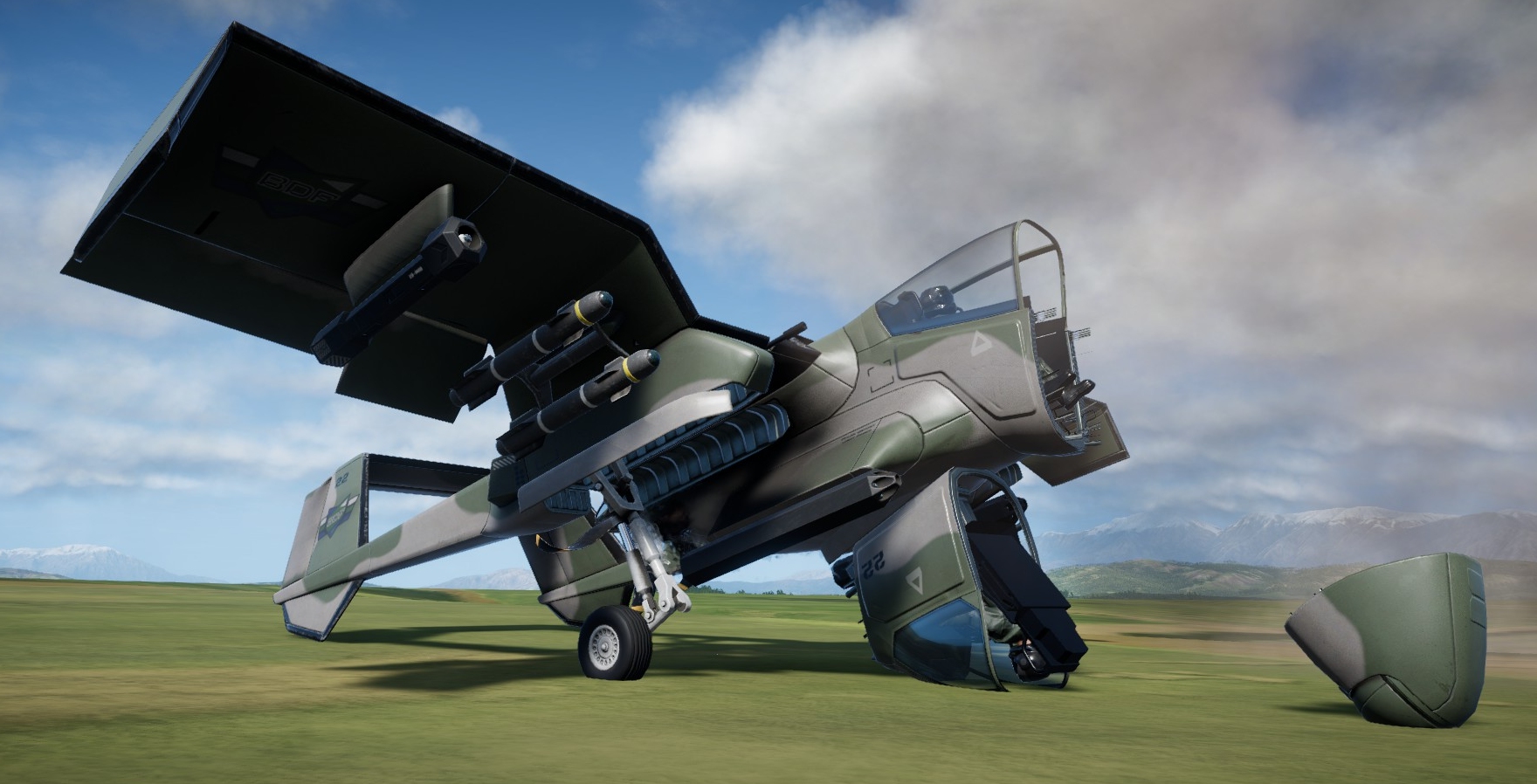
In my bulging screenshots folder there’s plenty of evidence of NO’s entertaining component-based damage modelling and ground handling. While machines such as the Cricket are almost as happy to alight on and amble across turf as tarmac, take too many liberties and even they will say “Enough is enough!”. Generally, the bigger or sleeker the warbird, the more careful you’ve got to be while taxiing. As I discovered during my first Darkreach sortie, heavily-laden SFB-81s must be trundled with especial care.
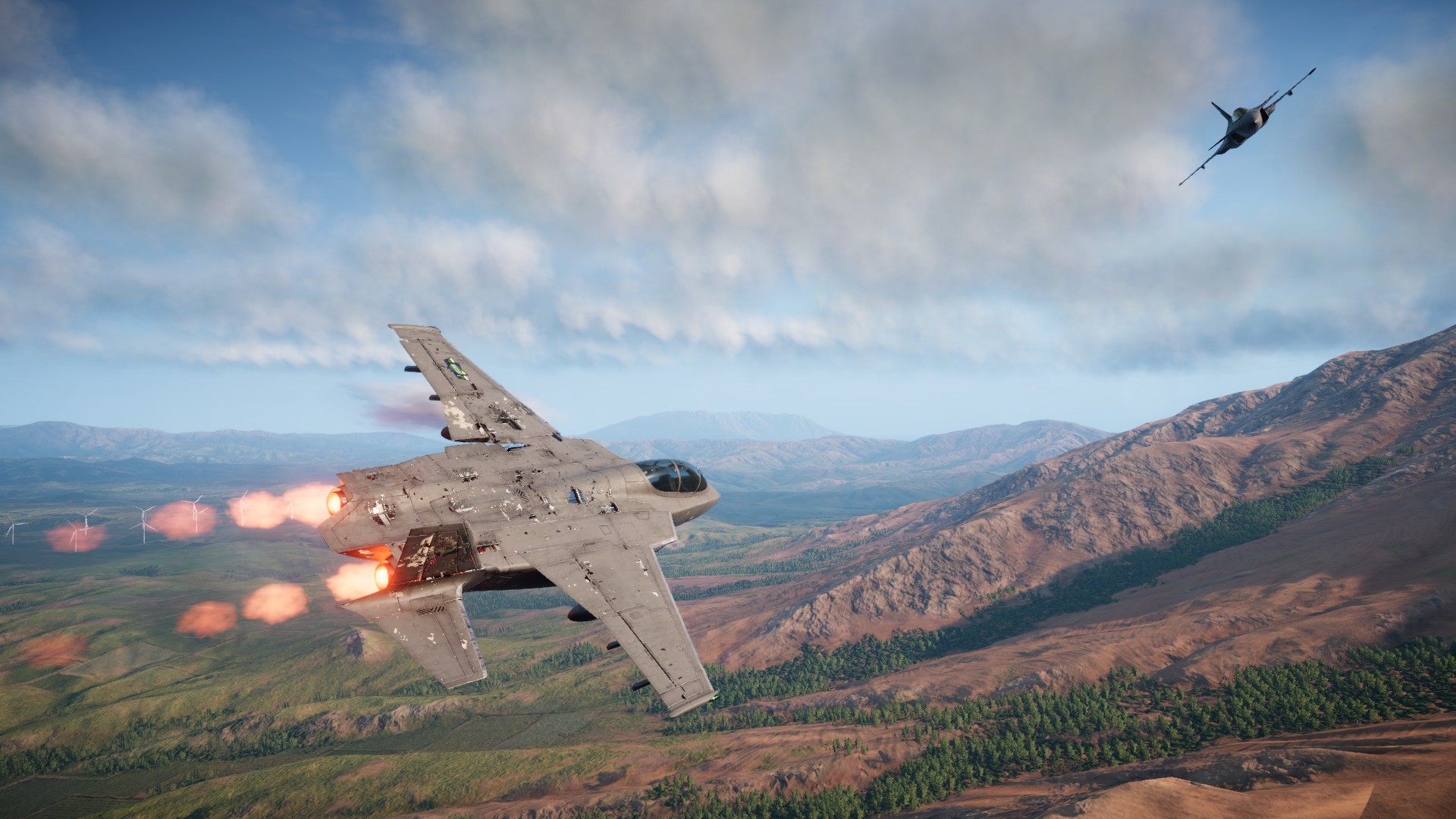
Thanks to BET-style flight modelling, portions of an aeroplane traumatically amputated by mishaps and munitions are immediately scrubbed from FM calculations. This is most obvious when you’re operating the Chicane and lose your tail rotor, or shorten a main rotor blade or two in a collision.
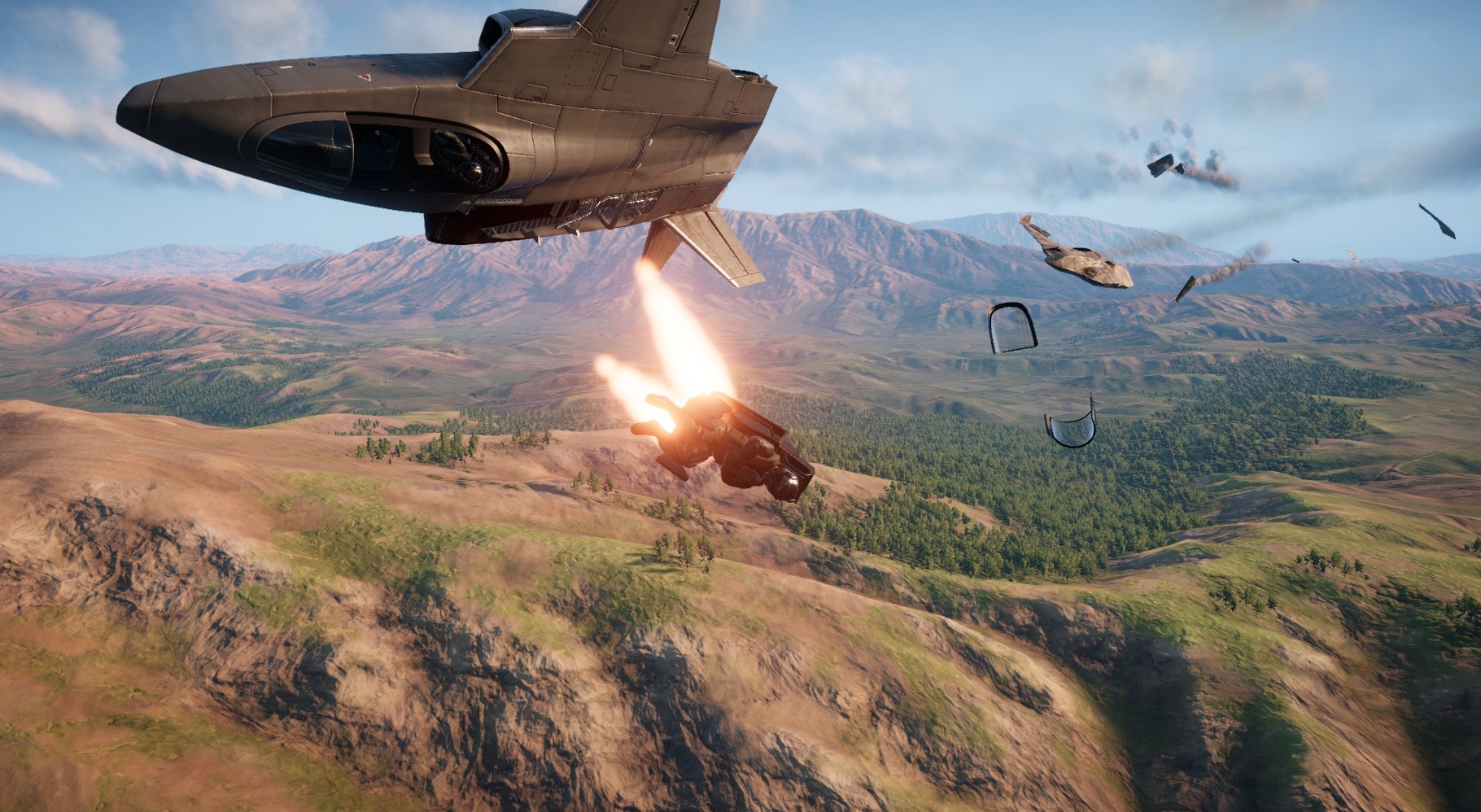
Though the vast majority of my Escalation sorties seem to end in a shower of a debris and a frantic ejection, now and again I have experienced the satisfaction that comes from getting back to base minus a wingtip, winglet, canard, or stab. The Cricket is particularly stoical. I suspect the wingless wonder in this pic would have made it home had it not been for a partypooping SPAAG.
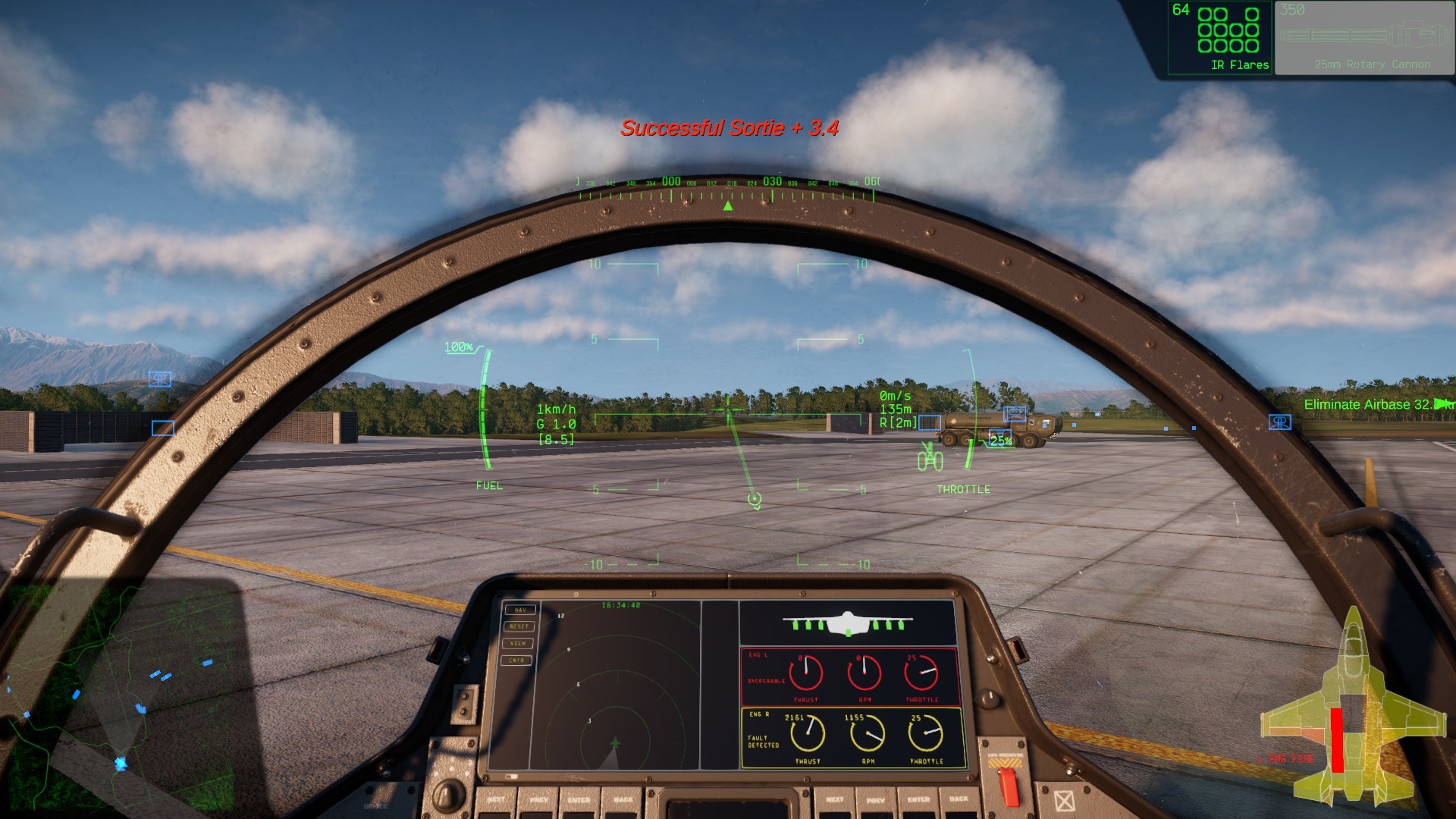
The roadmap takes much of the sting out of my short list of criticisms. However, as there’s no mention on it of more Escalation customisation options (weather, start time, initial territorial/economic balance…), saving (Escalation games can be lengthy affairs), and map frontlines and progress arrows (following the course of the war can be tricky), I’ll share those in the hope that someone from Shockfront happens to read this proto review.
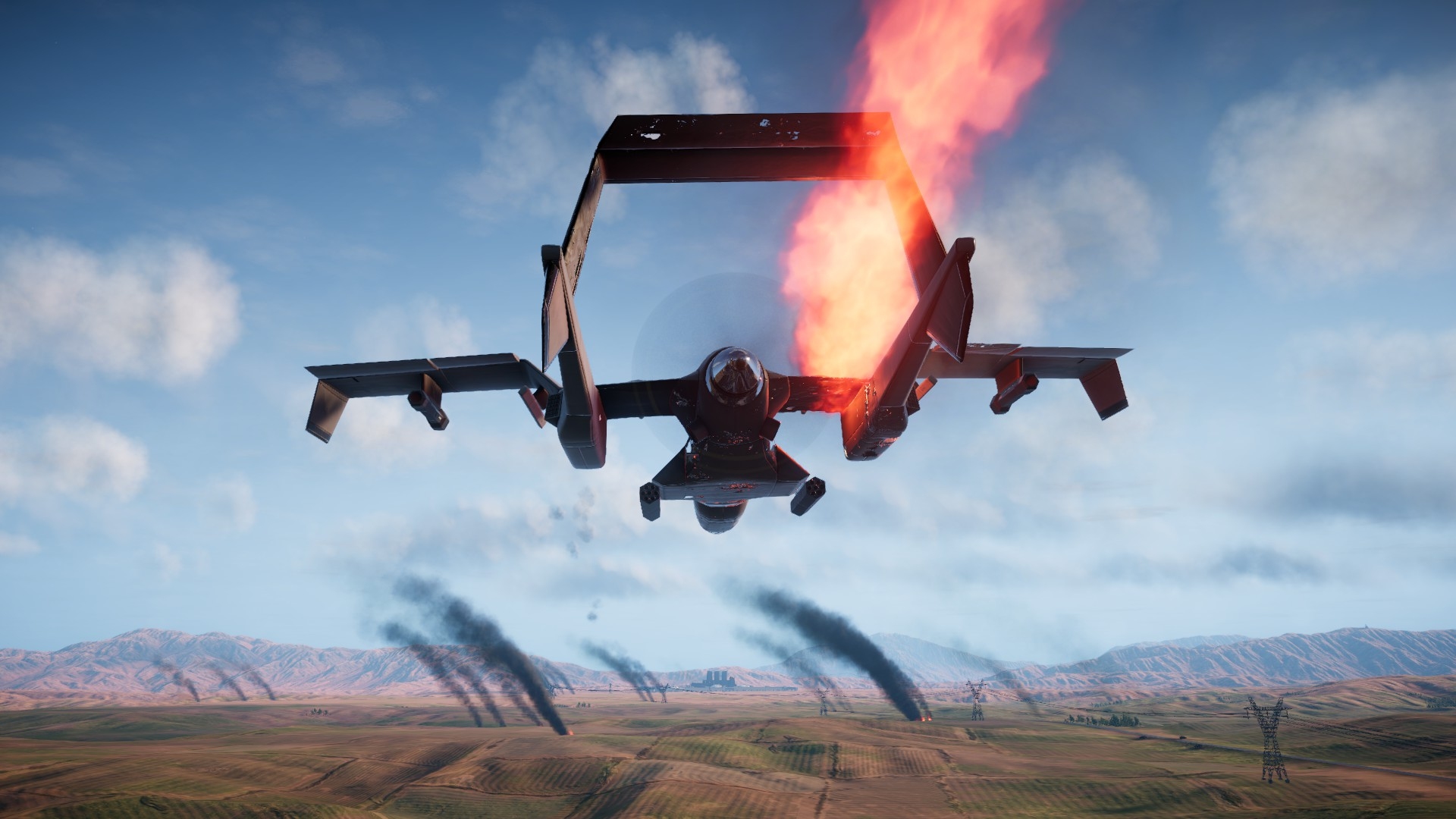
Just in case a beneficent billionaire with a love of lite flight sims stumbles on this piece, I’ll also share the following parting thought: “Some kind soul with deep pockets really needs to buy Shockfront the Crimson Skies licence.” Over the last few days it has struck me more than once that Nuclear Option’s efficient engine, appealing visuals, evocative flight models and friendly controls, would make a great foundation for the interwar sky pirates sim I’ve long dreamt of playing.

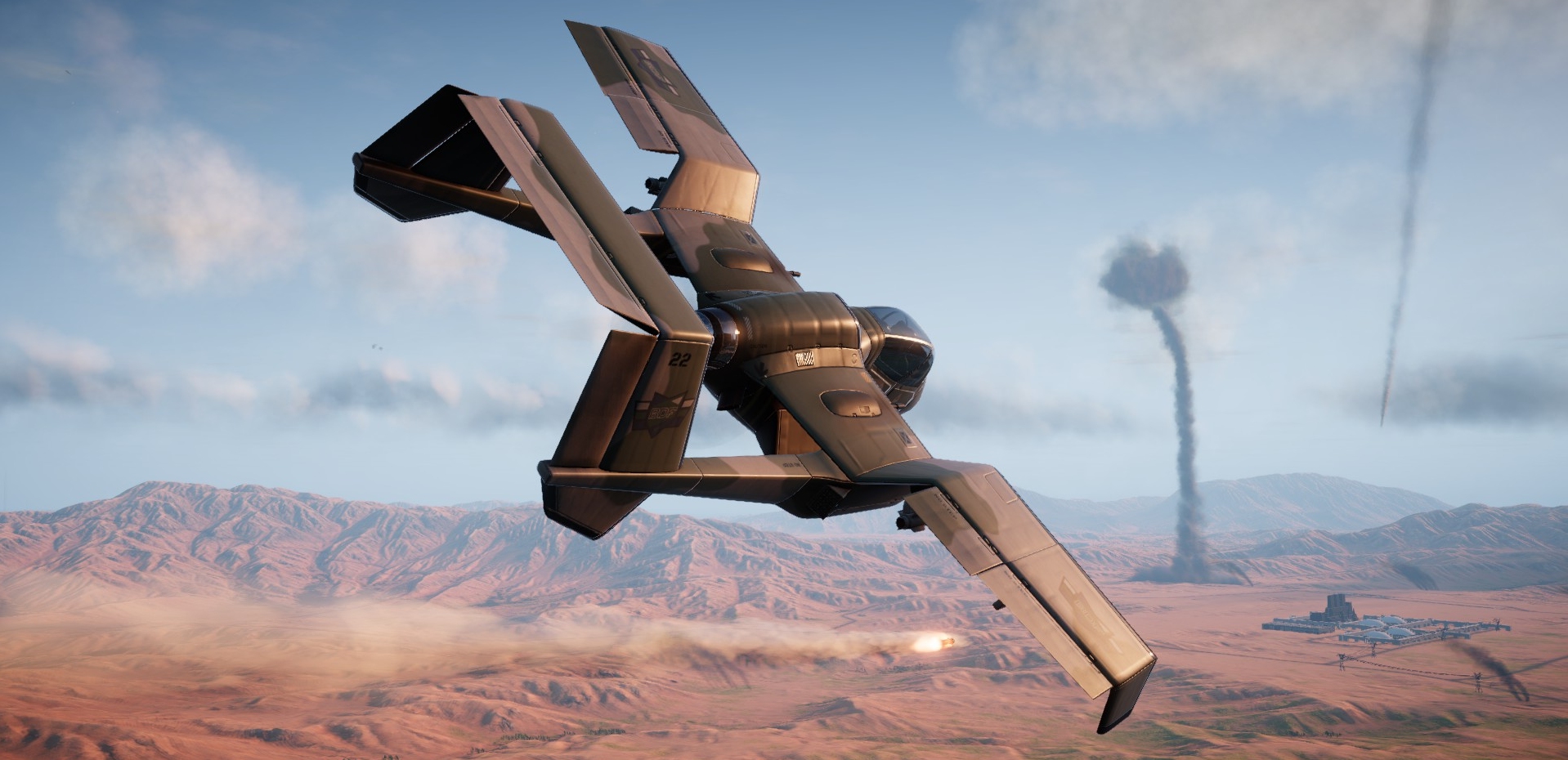
I picked up Tiny Combat Arena and Nuclear Option this Winter Sale and they’ve been just so much more fun than I expected! I was just looking for something for short sessions and I blink and 3 hours are gone. Wow!